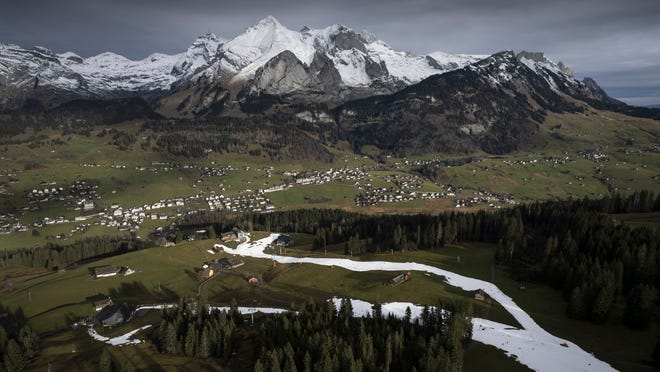Scientists around the world are scrambling to learn more about how rising average temperatures around the world are influencing the weather. They say it is increasingly likely that climate change will make weather events more intense, more frequent or longer in duration.
It raises temperatures during heat waves and adds a certain percentage of precipitation to intense storms. It can also cause weather events to occur outside of the times or locations where they have typically occurred in the past.
But what causes climate change? Why are global temperatures rising? And is global warming to blame for wild weather events? Here is some key information:
What does climate change mean?
The weather is what you see outside the window. Climate is what happens in an area for years or decades. Climate change is the observed difference in long-term trends in air, water and ocean temperatures and in longer-term weather patterns.
Monitoring stations around the world add to a growing wealth of information that reveals changes in temperature and precipitation. Some have decades of measurements, while others have over a century of data. In Japan, they record the beginning of cherry blossoms for more than 1,200 years.
Scientists use these historical records to study the increase in global average temperatures. For example, records show how sap rises earlier in maple trees or when forest fire seasons start earlier. They know that warmer temperatures delay ice formation on the Great Lakes, when warmer water temperatures feed more lake-effect snow.
DEFINITIONS:Is climate change the same as global warming?
EFFECTS:How climate change is disrupting our daily lives and fueling disasters.
What is the most important cause of climate change?
The greatest influence on climate change on the planet is the release of emissions into the atmosphere from the burning of oil, gas and coal to move people and goods from place to place and to create energy, according to the US Environmental Protection Agency.
Here’s how it works:
- Carbon dioxide and other natural gases have always existed into the atmosphere, keeping the world warm just like a greenhouse keeps tropical plants alive in winter. Scientists see this “greenhouse effect” in ice cores, sediments and tree rings.
- Modern measurements show that CO2 emissions are increasing. Since 1958, the level of carbon dioxide in the atmosphere measured at the Mauna Loa Observatory in Hawaii has fallen from 316 parts per million to 417 parts per million.
- Measured in such small amounts, the change may seem small. However, since CO2 has increased by more than 30%, NASA and others say the changes have an outsized impact on global average temperatures.
- National and international studies show how excess carbon dioxide traps excess energy and causes the planet to warm up faster.
If CO2 doubles above baseline pre-industrial levels, the draft of the latest National Climate Assessment indicates that global temperatures could rise by 4.5 to 7.2 degrees, causing deadly heat waves, damage to cultures and other cascading impacts around the world.
What are the other causes of climate change?
- Manufacturing, mining and logging.
- The release of methane and nitrous oxide also contributes to the greenhouse effect.
- The El Niño Southern Oscillation, a pattern of changing water temperatures in the Pacific Ocean, can alter weather patterns.
- Volcanic eruptions can produce carbon dioxide emissions that warm the Earth, but also aerosol particles that have a cooling effect.
How to stop climate change
So what can be done to avoid the predicted disastrous consequences if emissions and temperatures continue to rise?
Scientists from the United Nations and governments around the world say fossil fuel emissions must be reduced quickly to avoid “catastrophic consequences”. To keep the increase in global average temperatures to 2.7 degrees above temperatures in the late 1800s, the world must achieve “net zero” CO2 emissions by 2050, according to the latest climate assessment.
The world cannot reduce all emissions, so achieving net zero emissions requires removing carbon dioxide from the air by both natural and mechanical means, the Intergovernmental Panel on Climate Change has reported. United Nations Climate Change. This includes measures such as preserving and protecting forests and wetlands that store carbon and developing technologies that can effectively remove carbon from the air.
Other methods advocated by the UN and others include living a less carbon-intensive lifestyle and increasing the use of renewable energy resources.
Even if the world reaches net zero emissions, the National Climate Assessment indicates that it will be impossible to prevent some of the warming already underway.
You are deeper:
Dinah Voyles Pulver covers climate and environmental issues for USA TODAY. She can be reached at [email protected] or @dinahvp on Twitter.


